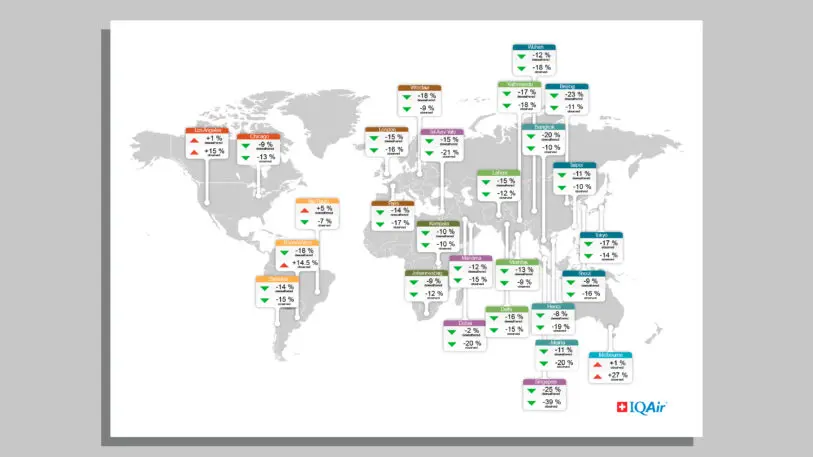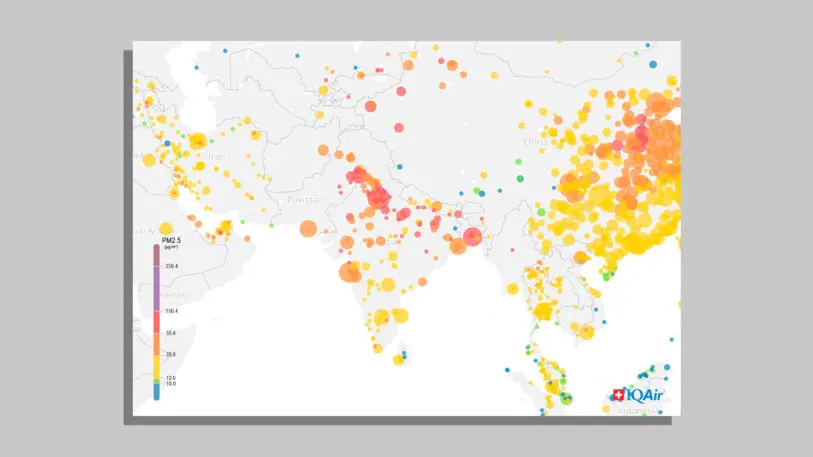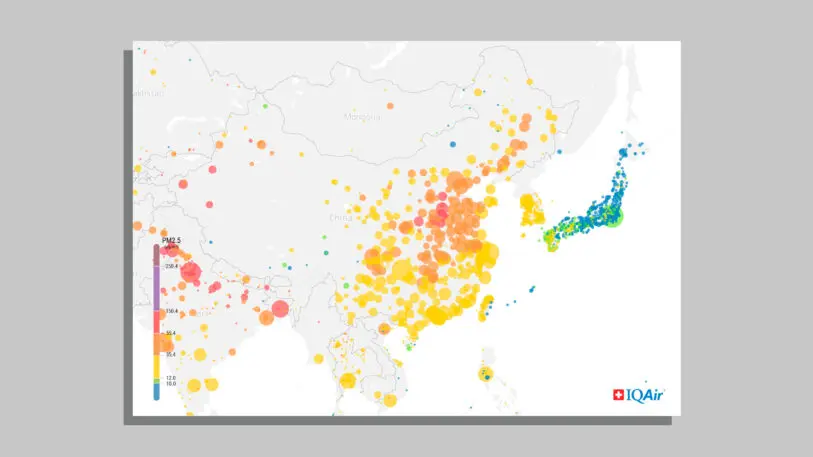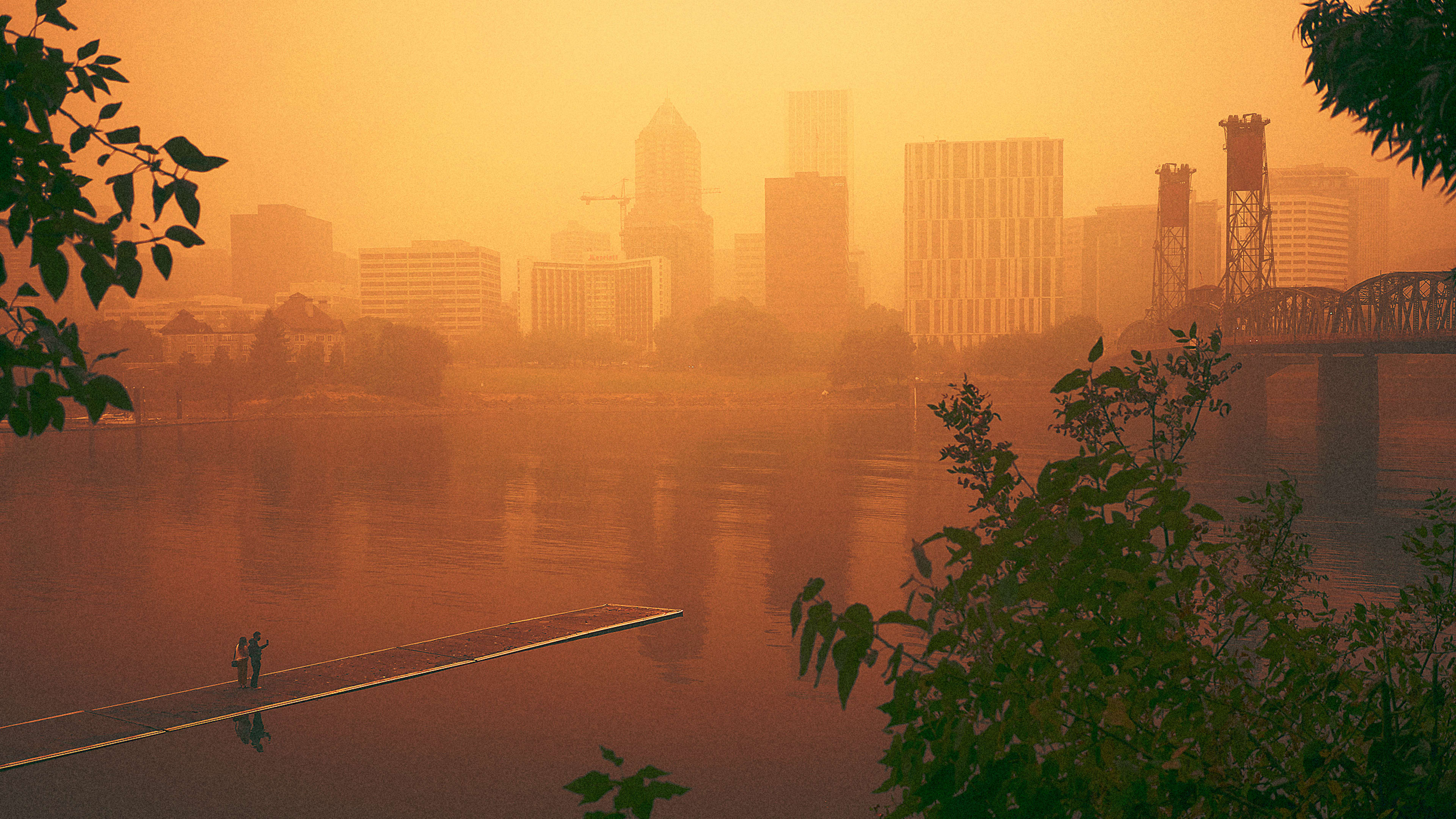As the world went into lockdown a year ago, air pollution plummeted. But the cleaner air didn’t last. For one, in places like California, Oregon, and Washington, record-breaking wildfires meant that at least temporarily, 77 of the world’s most polluted cities were in the United States.
And despite the fact that the pandemic canceled flights and shrank traffic on roads, only around a fifth of the world’s cities ended up meeting the World Health Organization’s annual guidelines for air quality.
A new report from IQAir, a Switzerland-based air quality technology company, maps how air pollution changed around the world in 2020, using data from tens of thousands of air quality sensors in 106 countries. The pandemic initially caused a major shift; air quality improved in 84% of all the countries that were monitored. “In 2020, we were part of this unexpected scientific experiment in which we were able to determine that with a change in behavior, we can stop the vicious cycle of having really elevated levels of pollution,” says Glory Dolphin Hammes, CEO of the company’s North American branch.

The majority of cities in India also experienced cleaner air, but the country still had some of the most polluted cities in the world. Around half of the cities in Europe exceed health guidelines for PM2.5, a type of dangerous air pollution.

But the temporary boost in air quality during the pandemic gives a sense of what will be possible when everyone living in a city like Los Angeles can drive an electric car, or ride a bike, or easily use public transportation, and how much the air can improve more if the entire economy transforms. As air pollution from cars and power plants shrinks, that will also help mitigate climate change, which is causing more air pollution itself. The most polluted city in the world last year was Hotan, China, where sandstorms that have been made worse by climate change made it hard to breathe.

That hasn’t happened yet. A recent report from the International Energy Agency that global CO2 emissions from energy—again, closely tied to local air pollution that impacts health—had jumped back to pre-pandemic levels, and warned that the world hasn’t done enough to invest in a green recovery. “Our numbers show we are returning to carbon-intensive business as usual,” IEA executive director Fatih Birol said in a statement.
Recognize your brand’s excellence by applying to this year’s Brands That Matter Awards before the final deadline, June 7.
Sign up for Brands That Matter notifications here.

